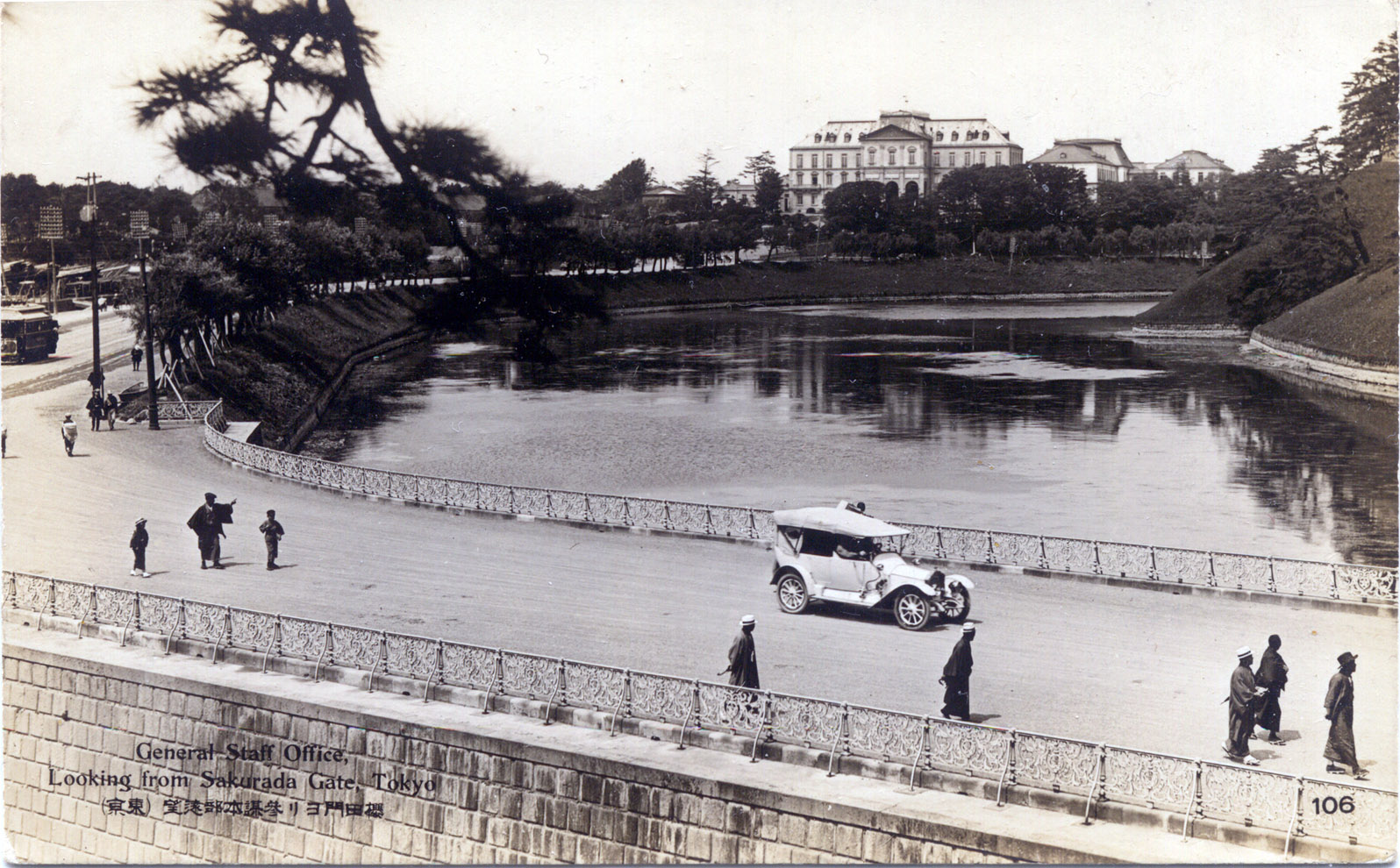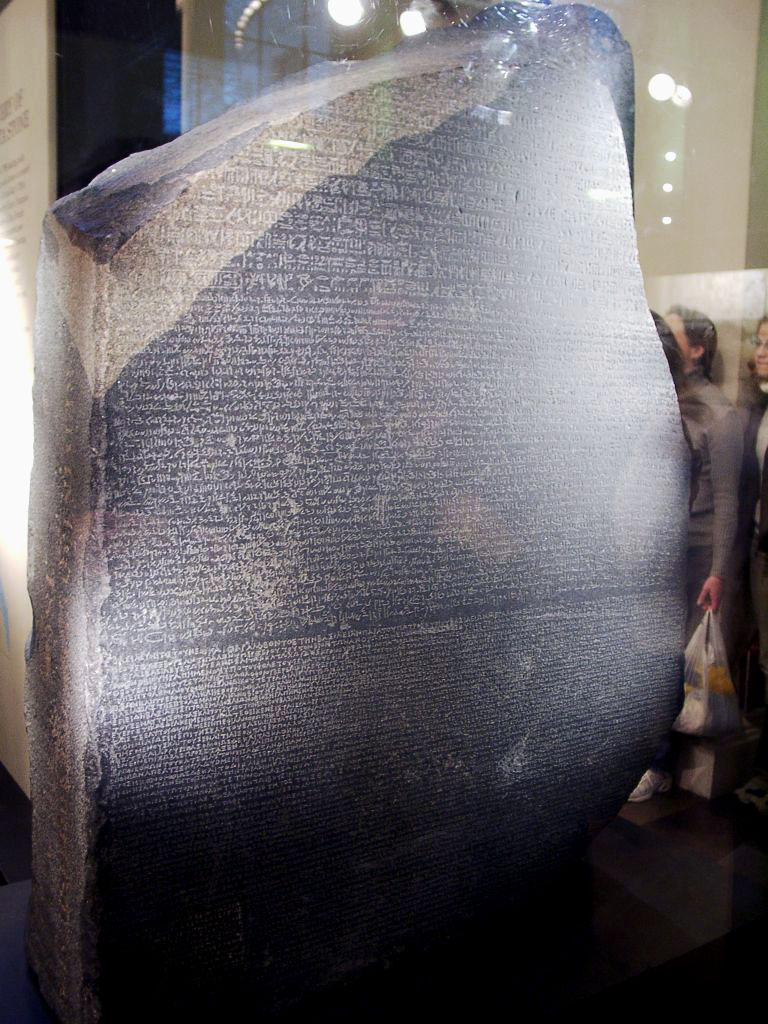|
Gwanggaeto Stele
The Gwanggaeto Stele is a memorial stele for the tomb of Gwanggaeto the Great of Goguryeo, erected in 414 by his son Jangsu. This monument to Gwanggaeto the Great is the largest engraved stele in the world. It stands near the tomb of Gwanggaeto in the present-day city of Ji'an along the Yalu River in Jilin Province, Northeast China, which was the capital of Goguryeo at that time. It is carved out of a single mass of granite, stands approximately 6.39m tall and has a girth of almost four meters. The inscription is written exclusively in Classical Chinese. The stele is one of the major primary sources for the history of Goguryeo, and supplies invaluable historical detail on Gwanggaeto's reign as well as insights into Goguryeo mythology. It has also become a focal point of national rivalries in East Asia manifested in the interpretations of the stele's inscription and the place of Goguryeo in modern historical narratives. An exact replica of the Gwanggaeto Stele stands on the gr ... [...More Info...] [...Related Items...] OR: [Wikipedia] [Google] [Baidu] |
Jurchen People
Jurchen (Manchu language, Manchu: ''Jušen'', ; zh, 女真, ''Nǚzhēn'', ) is a term used to collectively describe a number of East Asian people, East Asian Tungusic languages, Tungusic-speaking peoples, descended from the Donghu people. They lived in the northeast of China, later known as Manchuria, before the 18th century. The Jurchens were renamed Manchu people, Manchus in 1635 by Hong Taiji. Different Jurchen groups lived as hunter-gatherers, pastoralist semi-nomads, or sedentary agriculturists. Generally lacking a central authority, and having little communication with each other, many Jurchen groups fell under the influence of neighbouring dynasties, their chiefs paying tribute and holding nominal posts as effectively hereditary commanders of border guards. Chinese officials of the Ming dynasty (1368-1644) classified them into three groups, reflecting relative proximity to China: #Jianzhou Jurchens, Jianzhou (Chinese: 建州) Jurchens, some of whom were mixed with Korea ... [...More Info...] [...Related Items...] OR: [Wikipedia] [Google] [Baidu] |
Baekje
Baekje or Paekche (, ) was a Korean kingdom located in southwestern Korea from 18 BC to 660 AD. It was one of the Three Kingdoms of Korea, together with Goguryeo and Silla. Baekje was founded by Onjo of Baekje, Onjo, the third son of Goguryeo's founder King Dongmyeong of Goguryeo, Jumong and So Seo-no, at Wiryeseong (present-day southern Seoul). Baekje, like Goguryeo, claimed to succeed Buyeo kingdom, Buyeo, a state established in present-day Manchuria around the time of Gojoseon's fall. Baekje alternately battled and allied with Goguryeo and Silla as the three kingdoms expanded control over the peninsula. At its peak in the 4th century, Baekje controlled most of the western Korean peninsula, as far north as Pyongyang, and may have even held territories in Timeline of Chinese history#3rd century, China, such as in Liaoxi Commandery, Liaoxi, though this view is controversial. It became a significant regional sea power, with political and trade relations with China and Japan. ... [...More Info...] [...Related Items...] OR: [Wikipedia] [Google] [Baidu] |
Rubbing Of The Gwanggaeto Stele
A rubbing ('' frottage'') is a reproduction of the texture of a surface created by placing a piece of paper or similar material over the subject and then rubbing the paper with something to deposit marks, most commonly charcoal or pencil but also various forms of blotted and rolled ink, chalk, wax, and many other substances. For all its simplicity, the technique can be used to produce blur-free images of minuscule elevations and depressions on areas of any size in a way that can hardly be matched by even the most elaborate, state-of-the-art methods. In this way, surface elevations measuring only a few thousandths of a millimeter can be made visible. Common uses for this technique include: * Brass rubbing, to make copies of monumental brasses * Forensic uses, including finding out what was written on a sheet of paper removed from a pad by rubbing the impressions left on subsequent sheets or other backing materials * Frottage, a surrealist art form * Stone rubbing Stone rub ... [...More Info...] [...Related Items...] OR: [Wikipedia] [Google] [Baidu] |
Imperial Japanese Army General Staff Office
The , also called the Army General Staff, was one of the two principal agencies charged with overseeing the Imperial Japanese Army. Role The was created in April 1872, along with the Navy Ministry, to replace the Ministry of Military Affairs (''Hyōbushō'') of the early Meiji government. Initially, the Army Ministry was in charge of both administration and operational command of the Imperial Japanese Army however, from December 1878, the Imperial Army General Staff Office took over all operational control of the Army, leaving the Army Ministry only with administrative functions. The Imperial Army General Staff was thus responsible for the preparation of war plans; the military training and employment of combined arms military intelligence; the direction of troop maneuvers; troop deployments; and the compilation of field service military regulations, military histories, and cartography. The Chief of the Army General Staff was the senior ranking uniformed officer in the Imper ... [...More Info...] [...Related Items...] OR: [Wikipedia] [Google] [Baidu] |
Stone Rubbing
Stone rubbing is the practice of creating an image of surface features of a stone on paper. The image records features such as natural textures, inscribed patterns or lettering. By rubbing hard rendering materials over the paper, pigment is deposited over protrusions and on edges; depressions remain unpigmented since the pliable paper moves away from the rendering material. Common rendering materials include rice paper, charcoal, wax, graphite or inksticks. Over time, the practice of stone rubbing can cause permanent damage to cultural monuments due to abrasion. For an artist, stone rubbings can become an entire body of creative work that is framed and displayed. Technique The paper that has been used by Chinese scholars to transfer the calligraphy from stones is made from plant fiber. It can be used in two ways to retrieve the calligraphy. One way requires the paper to be dry and then adhered to the stone through a paste made with water and a starch that is made from rice or whe ... [...More Info...] [...Related Items...] OR: [Wikipedia] [Google] [Baidu] |
County Magistrate
County magistrate ( or ) sometimes called local magistrate, in imperial China was the official in charge of the '' xian'', or county, the lowest level of central government. The magistrate was the official who had face-to-face relations with the people and administered all aspects of government on behalf of the emperor. Because he was expected to rule in a disciplined but caring way and because the people were expected to obey, the county magistrate was informally known as the Fumu Guan (), the "Father and Mother" or "parental" official. The emperor appointed magistrates from among those who passed the imperial examinations or had purchased equivalent degrees. Education in the Confucian Classics indoctrinated these officials with a shared ideology that helped to unify the empire, but not with practical training. A magistrate acquired specialized skills only after assuming office. Once in office, the magistrate was caught between the demands of his superiors and the needs and res ... [...More Info...] [...Related Items...] OR: [Wikipedia] [Google] [Baidu] |
Epigraphy
Epigraphy () is the study of inscriptions, or epigraphs, as writing; it is the science of identifying graphemes, clarifying their meanings, classifying their uses according to dates and cultural contexts, and drawing conclusions about the writing and the writers. Specifically excluded from epigraphy are the historical significance of an epigraph as a document and the artistic value of a literary composition. A person using the methods of epigraphy is called an ''epigrapher'' or ''epigraphist''. For example, the Behistun inscription is an official document of the Achaemenid Empire engraved on native rock at a location in Iran. Epigraphists are responsible for reconstructing, translating, and dating the trilingual inscription and finding any relevant circumstances. It is the work of historians, however, to determine and interpret the events recorded by the inscription as document. Often, epigraphy and history are competences practised by the same person. Epigraphy is a primar ... [...More Info...] [...Related Items...] OR: [Wikipedia] [Google] [Baidu] |



.jpg)


